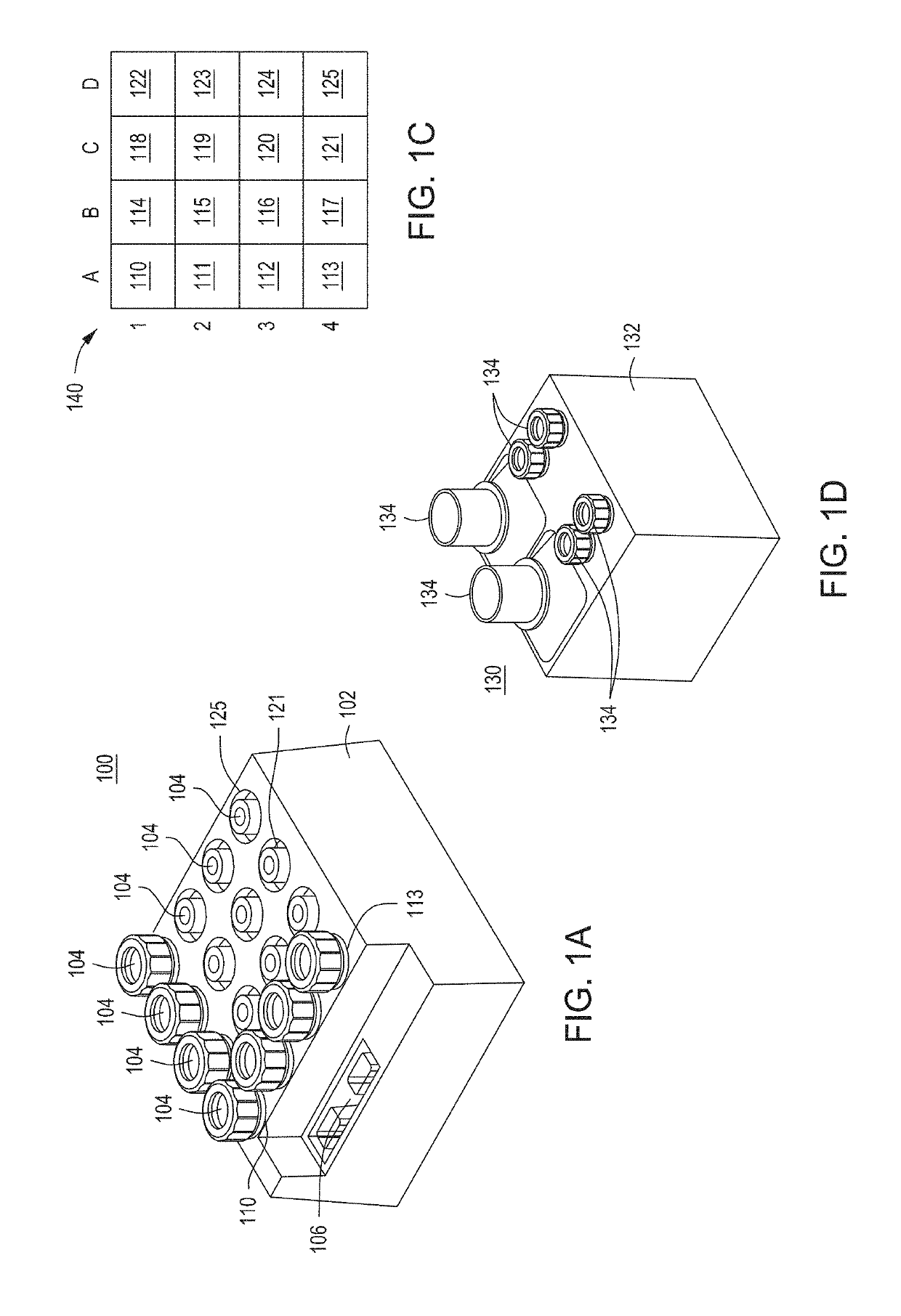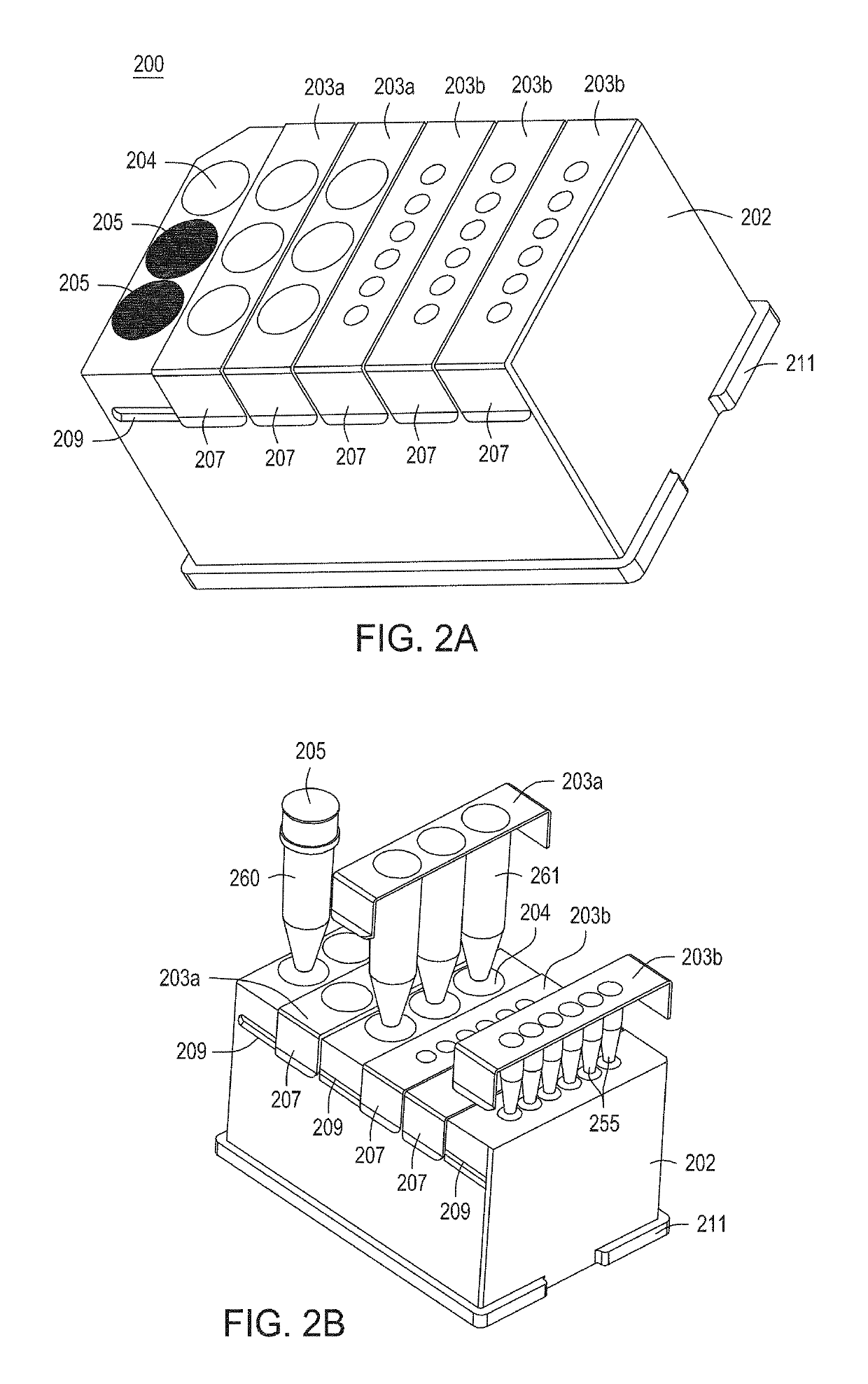Automated cell processing instruments comprising reagent cartridges
a technology of reagent cartridges and cell processing methods, which is applied in the field of automatic multi-module instruments comprising reagent cartridges, can solve the problems of cumbersome methods and instruments to create edited cell populations, incompatible methods with automation, and inability to scale and integrate well into an automated system
- Summary
- Abstract
- Description
- Claims
- Application Information
AI Technical Summary
Benefits of technology
Problems solved by technology
Method used
Image
Examples
examples
[0221]The following examples are put forth so as to provide those of ordinary skill in the art with a complete disclosure and description of how to make and use the present invention, and are not intended to limit the scope of what the inventors regard as their invention, nor are they intended to represent or imply that the experiments below are all of or the only experiments performed. It will be appreciated by persons skilled in the art that numerous variations and / or modifications may be made to the invention as shown in the specific aspects without departing from the spirit or scope of the invention as broadly described. The present aspects are, therefore, to be considered in all respects as illustrative and not restrictive.
example i
the Cell Growth Module
[0222]One embodiment of the cell growth device as described herein was tested against a conventional cell shaker shaking a 5 ml tube and an orbital shaker shaking a 125 ml baffled flask to evaluate cell growth in bacterial and yeast cells. Additionally, growth of a bacterial cell culture and a yeast cell culture was monitored in real time using an embodiment of the cell growth device described herein.
[0223]In a first example, 20 ml EC23 cells (E. coli cells) in LB were grown in a 35 ml rotating growth vial at 30° C. using the cell growth device as described herein. The rotating growth vial was spun at 600 rpm and oscillated (i.e., the rotation direction was changed) every 1 second. OD was measured in the cell growth device. In parallel, 5 ml EC23 cells in LB were grown in an orbital shaker in a 5 ml tube at 30° C. and were shaken at 750 rpm; the OD600 was measured at intervals using a NanoDrop™ spectrophotometer (Thermo Fisher Scientific). The results are shown...
example ii
ntration
[0227]The TFF module as described above in relation to FIGS. 6A-6I has been used successfully to process and perform buffer exchange on both E. coli and yeast cultures. In concentrating an E. coli culture, the following steps were performed:
[0228]First, a 20 ml culture of E. coli in LB grown to OD 0.5-0.62 was passed through the TFF device in one direction, then passed through the TFF device in the opposite direction. At this point, the cells were concentrated to a volume of approximately 5 ml. Next, 50 ml of 10% glycerol was added to the concentrated cells, and the cells were passed through the TFF device in one direction, in the opposite direction, and back in the first direction for a total of three passes. Again the cells were concentrated to a volume of approximately 5 ml. Again, 50 ml of 10% glycerol was added to the 5 ml of cells and the cells were passed through the TFF device for three passes. This process was repeated; that is, again 50 ml 10% glycerol was added to...
PUM
| Property | Measurement | Unit |
|---|---|---|
| temperature | aaaaa | aaaaa |
| volume | aaaaa | aaaaa |
| volume | aaaaa | aaaaa |
Abstract
Description
Claims
Application Information
 Login to View More
Login to View More - R&D
- Intellectual Property
- Life Sciences
- Materials
- Tech Scout
- Unparalleled Data Quality
- Higher Quality Content
- 60% Fewer Hallucinations
Browse by: Latest US Patents, China's latest patents, Technical Efficacy Thesaurus, Application Domain, Technology Topic, Popular Technical Reports.
© 2025 PatSnap. All rights reserved.Legal|Privacy policy|Modern Slavery Act Transparency Statement|Sitemap|About US| Contact US: help@patsnap.com



